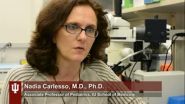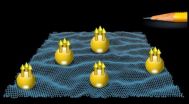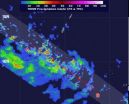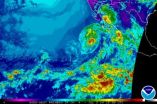(Press-News.org) LEXINGTON, Ky. (July 3, 2014) -- Researchers from the Sanders-Brown Center on Aging at the University of Kentucky have been able to confirm anecdotal information on patients with both Alzheimer's disease (AD) and cerebrovascular disease (CVD) using mouse models in two different studies.
The findings of these two studies, which were recently published in Acta Neuropathologica and Alzheimer's Research & Therapy, have potentially significant implications for patients with both disorders.
Both papers studied CVD in Alzheimer's disease mouse models using different lifestyle factors.
Paul Murphy, Ph.D, and his group studied the combined effects of type 2 diabetes, Alzheimer's disease, and cerebrovascular disease in a novel mouse genetic model.
Donna Wilcock, Ph.D, and her group used a different mouse model to study the effects of Alzheimer's disease and hyperhomocysteinemia on cognition. An elevated level of homocysteine is associated with a number of disease states, including CVD.
According to Wilcock, both papers came to similar conclusions.
"We found that, while the primary Alzheimer's pathologies were unchanged, the learning and memory outcomes were significantly worse. In other words, in our mouse models, the cognitive effects of Alzheimer's disease combined with cerebrovascular disease were compounded both in terms of severity and the speed of decline," Wilcock says.
Murphy emphasizes the significance of the findings, particularly since approximately 40% of Alzheimer's patients also have cerebrovascular disease.
"We are really excited about these results," Murphy said. "Until now, we have had almost no way to study how Alzheimer's and cerebrovascular disease interact. These new mouse models give us a way to test ideas about the disease, and ultimately develop ways to treat it."
INFORMATION:
The University of Kentucky's Sanders-Brown Center on Aging (SBCoA) was established in 1979 and is one of the original ten National Institutes of Health (NIH)-funded Alzheimer's disease Research Centers. The SBCoA is internationally acclaimed for its progress in the fight against illnesses facing the aging population.
Compounded outcomes associated with comorbid Alzheimer's disease & cerebrovascular disease
Two studies by researchers at the Sanders-Brown Center on Aging find similar results with different mouse models
2014-07-03
ELSE PRESS RELEASES FROM THIS DATE:
Biochemical cascade causes bone marrow inflammation, leading to serious blood disorders
2014-07-03
VIDEO:
Like a line of falling dominos, a cascade of molecular events in the bone marrow produces high levels of inflammation that disrupt normal blood formation and lead to potentially deadly...
Click here for more information.
INDIANAPOLIS -- Like a line of falling dominos, a cascade of molecular events in the bone marrow produces high levels of inflammation that disrupt normal blood formation and lead to potentially deadly disorders including leukemia, an Indiana University-led ...
How knots can swap positions on a DNA strand
2014-07-03
Physicists of Johannes Gutenberg University Mainz (JGU) and the Graduate School of Excellence "Materials Science in Mainz" (MAINZ) have been able with the aid of computer simulations to confirm and explain a mechanism by which two knots on a DNA strand can interchange their positions. For this, one of the knots grows in size while the other diffuses along the contour of the former. Since there is only a small free energy barrier to swap, a significant number of crossing events have been observed in molecular dynamics simulations, i.e., there is a high probability of such ...
From pencil marks to quantum computers
2014-07-03
Introducing graphene
One of the hottest materials in condensed matter research today is graphene.
Graphene had an unlikely start: it began with researchers messing around with pencil marks on paper. Pencil "lead" is actually made of graphite, which is a soft crystal lattice made of nothing but carbon atoms. When pencils deposit that graphite on paper, the lattice is laid down in thin sheets. By pulling that lattice apart into thinner sheets – originally using Scotch tape – researchers discovered that they could make flakes of crystal just one atom thick.
The name ...
Payback time for soil carbon from pasture conversion to sugarcane production
2014-07-03
The reduction of soil carbon stock caused by the conversion of pasture areas into sugarcane plantations – a very common change in Brazil in recent years – may be offset within two or three years of cultivation.
The calculation appears in a study conducted by researchers at the Center for Nuclear Energy in Agriculture (CENA) of the University of São Paulo (USP) in collaboration with colleagues from the Luiz de Queiroz College of Agriculture (Esalq), also at USP. The study also included researchers from the Federal Institute of Alagoas (IFAL), the Brazilian Bioethanol Science ...
New satellite data like an ultrasound for baby stars
2014-07-03
An international team of researchers have been monitoring the "heartbeats" of baby stars to test theories of how the Sun was born 4.5 billion years ago.
In a paper published in Science magazine today, the team of 20 scientists describes how data from two space telescopes – the Canadian Space Agency's MOST satellite and the French CoRoT mission – have unveiled the internal structures and ages of young stars before they've even emerged as full-fledged stars.
"Think of it as ultrasound of stellar embryos," explains University of British Professor Jaymie Matthews, MOST ...
A young star's age can be gleamed from nothing but sound waves
2014-07-03
VIDEO:
In a young region like the so-called Christmas Tree Cluster, stars are still in the process of forming. A star is 'born' once it becomes optically visible (bottom right). During...
Click here for more information.
Determining the age of stars has long been a challenge for astronomers. In experiments published in the journal Science, researchers at KU Leuven's Institute for Astronomy show that 'infant' stars can be distinguished from 'adolescent' stars by measuring the acoustic ...
Sweet genes
2014-07-03
Edmonton, July 3, 2014 – A research team at the Faculty of Medicine & Dentistry at the University of Alberta have discovered a new way by which metabolism is linked to the regulation of DNA, the basis of our genetic code. The findings may have important implications for the understanding of many common diseases, including cancer.
The DNA wraps around specialized proteins called histones in the cell's nucleus. Normally, histones keep the DNA tightly packaged, preventing the expression of genes and the replication of DNA, which are required for cell growth and division. ...
NASA sees rainfall in newborn Tropical Depression 8W
2014-07-03
Powerful thunderstorms in some areas of newborn Tropical Depression 08W in the Northwestern Pacific Ocean were dropping heavy rainfall on July 3 as NASA's Tropical Rainfall Measuring Mission (TRMM) satellite passed overhead.
The eighth depression of the Northwestern Pacific Ocean season formed on July 3 at 0900 UTC (5 a.m. EDT). It was located near 10.0 north latitude and 144.3 east longitude about 240 nautical miles south of Andersen Air Force Base, Guam. Tropical Depression 08W or TD08W had maximum sustained winds near 30 knots (34.5 mph/55.5 kph) and it was moving ...
Safer, cheaper building blocks for future anti-HIV and cancer drugs
2014-07-03
A team of researchers from KU Leuven, in Belgium, has developed an economical, reliable and heavy metal-free chemical reaction that yields fully functional 1,2,3-triazoles. Triazoles are chemical compounds that can be used as building blocks for more complex chemical compounds, including pharmaceutical drugs.
Leveraging the compound's surprisingly stable structure, drug developers have successfully used 1,2,3-triazoles as building blocks in various anti-HIV, anti-cancer and anti-bacterial drugs. But efforts to synthesize the compound have been hampered by one serious ...
Tropical Storm Douglas weakening in the eastern Pacific
2014-07-03
Tropical Storm Douglas is on a weakening trend, according to the National Hurricane Center, and satellite imagery showed that the storm appeared more elongated on July 3.
NOAA's Geostationary Operational Environmental Satellite or GOES-West satellite captured visible data on Douglas just after sunrise on July 3 at 13:15 UTC (9:15 a.m. EDT). The data from GOES-West was made into an image at NASA/NOAA's GOES Project at the NASA Goddard Space Flight Center in Greenbelt, Md.
Forecaster Stewart at the National Hurricane Center cited that Douglas' thunderstorm activity had ...
LAST 30 PRESS RELEASES:
Australian team discover why quantum computers have memory problems over time
What determines the fate of a T cell?
Candida auris: genetic process revealed which could be treatment target for deadly fungal disease
Groundbreaking discovery turns household plastic recycling into anti-cancer medication
Blocking a key inflammatory pathway improves liver structure and vascular function in cirrhosis, study finds
Continuous spread: Raccoon roundworm detected in nine European countries
HKUST Engineering researchers developed a novel photodetector to enhance the performance of on-chip light monitoring
Strategic river sensors could have forewarned of Texas Camp flood disaster
Drone sampling of whale breath reveals first evidence of potentially deadly virus in Arctic
Roman soldiers defending Hadrian’s Wall infected by parasites, study finds
Pinochet’s prisoners were tormented with music but still found solace in it, a new book reveals
Fertility remains high in rural Tanzania despite access to family planning
AI-assisted device can improve autism care access
Kinetic careers
Uncovering how parasitic plants avoid attacking themselves to improve crop resistance
Nanoparticle vaccine strategy could protect against Ebola and other deadly filoviruses
Study finds brain care score can predict risk of stroke across racial groups
Key lung immune cells can intensify allergic reactions
Do hormones explain why women experience more gut pain?
New materials conduct ions in solids as easily as in liquids
Breakthrough of the Year: Renewable energy begins to eclipse fossil fuel-based sources
LLM use is reshaping scientific enterprise by increasing output, reducing quality and more
Introducing LightGen, a chip for ultra-fast, ultra-efficient generative AI
Astronomers see fireworks from violent collisions around nearby star
ACC/AHA issue new guideline on managing congenital heart disease in adults
Cosmic crash caught on camera
Is talented youth nurtured the wrong way? New study shows: top performers develop differently than assumed
Ants: An untapped resource in the development of antibiotics?
Archaeologists use AI to create prehistoric video game
Mitochondria migrate toward the cell membrane in response to high glucose levels
[Press-News.org] Compounded outcomes associated with comorbid Alzheimer's disease & cerebrovascular diseaseTwo studies by researchers at the Sanders-Brown Center on Aging find similar results with different mouse models





